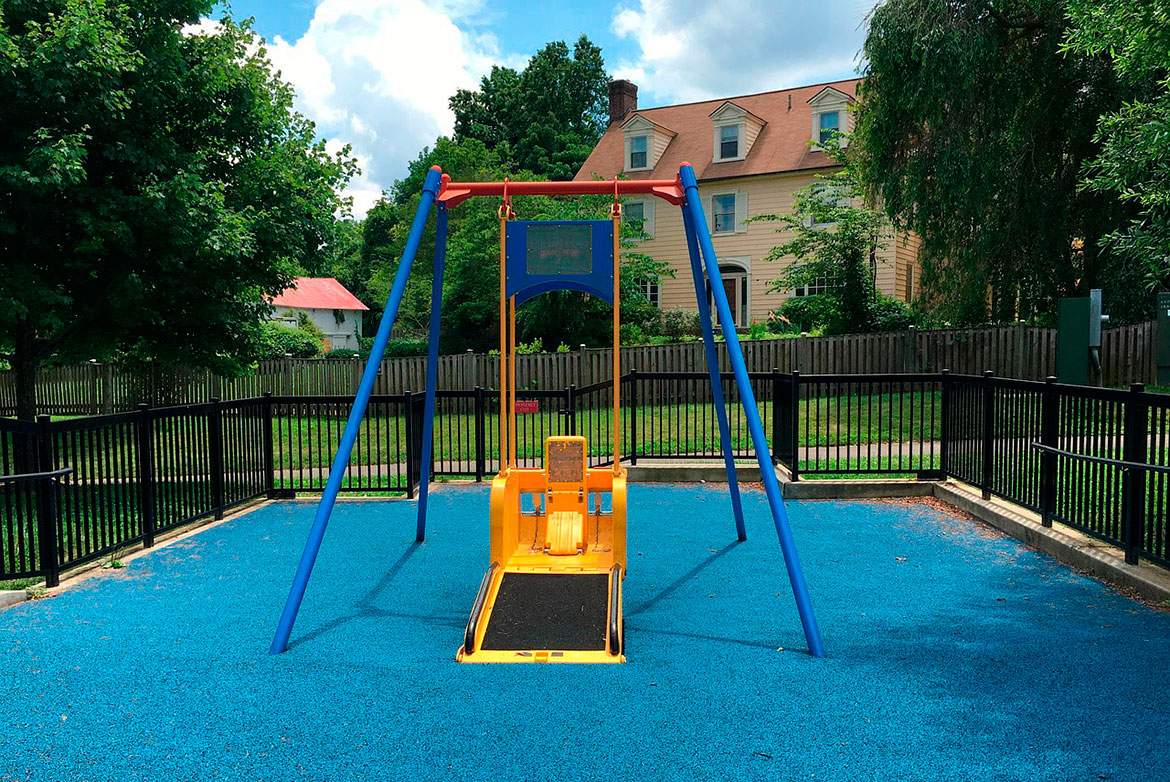A Guide To Inclusive Playground Design
Inclusive, or accessible playgrounds are playgrounds where children with disabilities are able to play. Inclusive play is meant to allow children with disabilities to interact with other children in a setting where all kids can play regardless of their ability. The term "sensory play" is also often heard when talking about inclusive play and inclusive playgrounds. Unfortunately due to the increased costs of inclusive play equipment, many local governments cannot afford the costs of installing inclusive playgrounds. There are however, grants and other opportunities available for obtaining inclusive play equipment.
Inclusive play is the creation of environments for play that serve sensory, physical, cognitive, social, and emotional needs of all children in a community, regardless of ability. Properly designed inclusive play spaces will combine handicap accessibility with designs that support social interactions between children with and without disabilities. There is a movement of sorts that is striving to developing inclusive play experiences that are both sustainable and ongoing and meet the needs of children of all abilities. There are some main principles of inclusive playgrounds.
Inclusive Play Principles
- Be Included - An inclusive play environment should support the participation of all individuals of any ability in physical and social activities for inclusive play. Areas that are designed to be physically and socially inclusive will provide children with an opportunity to participate more equally with their friends, siblings, and other children.
- Be Fair - An inclusive play environment will provide a sort of social justice as it can be used by children of all abilities who can enjoy the right they have to play. Areas that are designed to be fair will give everyone the opportunity to participate equally.
- Be Independent - Inclusive play areas will give children an opportunity to effectively participate and explore play at their own level. Inclusive play areas that incorporate multiple sensory modes can help to support independent play.
- Be Smart - An inclusive playground should be easy to understand which will allow children to gain confidence and be successful in play. Inclusive play spaces that are designed in a developmentally appropriate way, and are easily understandable to children will provide many opportunities for them to demonstrate their capabilities.
- Be Active - It is important for children of all abilities to be active to the degree that they are able to be. Inclusive play spaces that are properly designed will support different degrees or not only social but also physical participation. They should also be designed to minimize any unnecessary fatigue. Inclusive playgrounds that offer different degrees of physical activity will allow all kids to enjoy sustained physical activities without it becoming extraneous.
- Be Safe - Safety is important for any playground and inclusive playgrounds are no exception. Inclusive play spaces should address the most current safety standards while still maintaining their ability to provide opportunities for developmental challenge and exploration. Safe inclusive playgrounds allow children to safely take developmentally appropriate risks.
- Be Comfortable - Playgrounds are not necessarily just for children. Inclusive playgrounds should be designed for individuals of diverse body size, motor control, mobility, posture, and more. Inclusive play areas that are designed with comfortable use in mind will allow everyone to participate in play.
Inclusive playgrounds are important and anyone who lives in an area where one cannot be found may want to consider looking into different grant opportunities. It may also help to contact city officials to discuss the possibilities of creating an inclusive play space. While some elements of inclusive play can be more expensive, grants, fundraising, and other opportunities may make the equipment more affordable. All children and adults alike should be able to enjoy themselves outdoors and with inclusive equipment, that becomes a possibility.
Learn More About Inclusive Play By Visiting The Following:
- The Value and Particular Benefits ofInclusive Play
- What is Inclusive Play?
- Applying the Principles of Universal Design to Playgrounds
- Inclusive Play and Inclusive Playgrounds Explained
- Focus: Playgrounds of Inclusion
- For Kids With Special Needs, More Places to Play
- Find an Inclusive Playground
Find more about the author: Kim Hart


